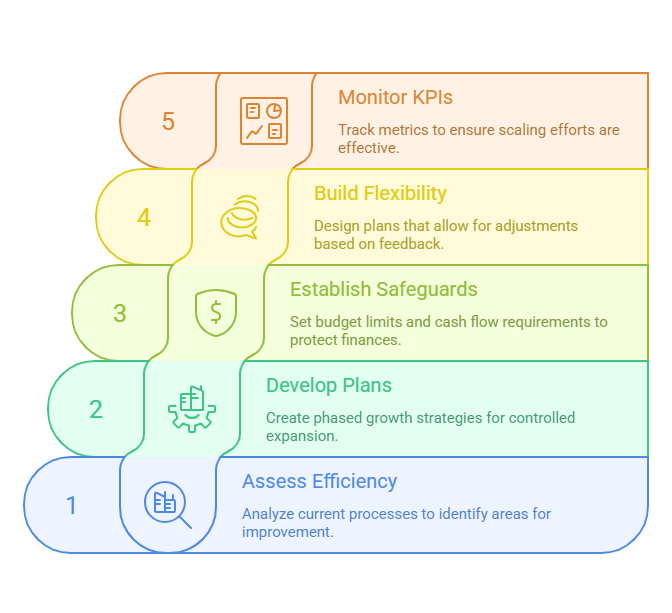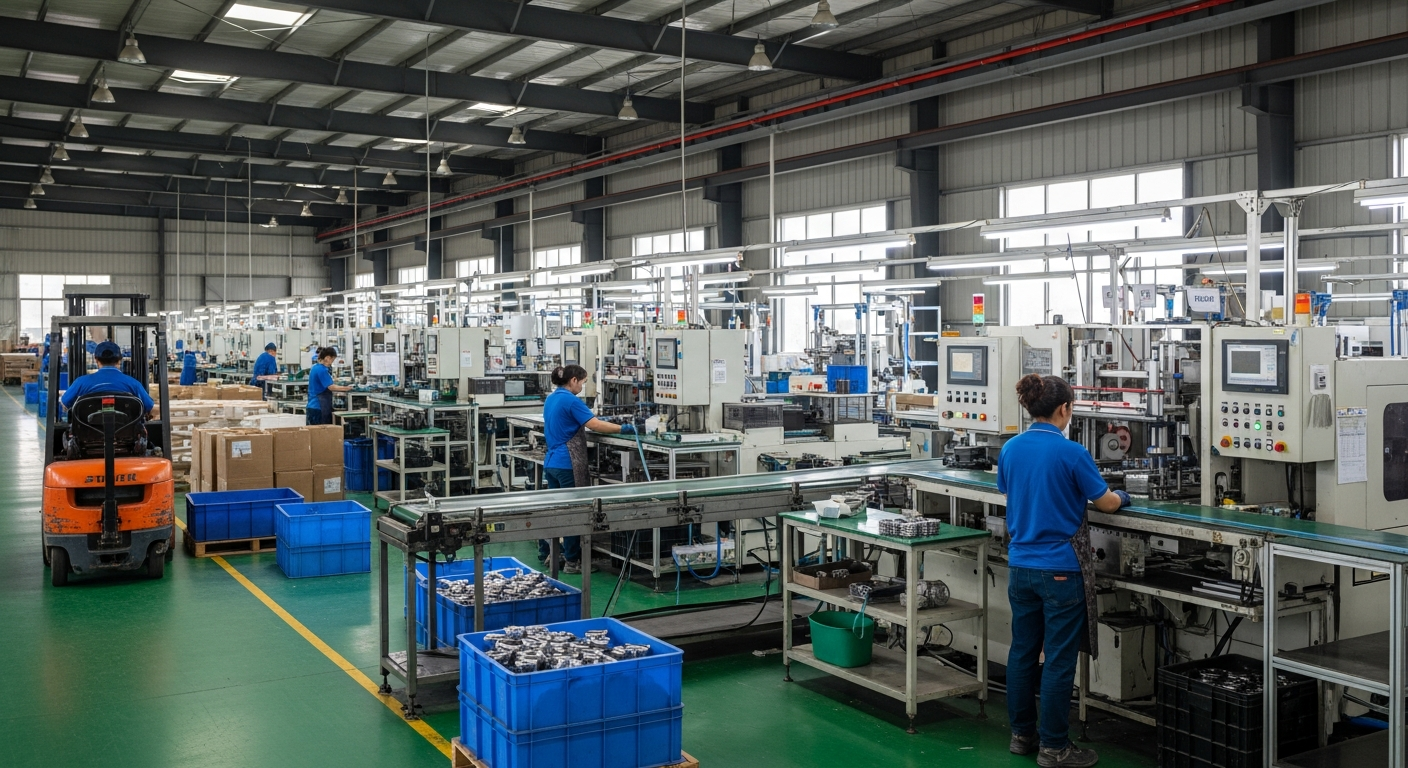Growing a manufacturing business might feel like walking a tightrope between opportunity and risk. You want to expand capacity, meet growing demand, and stay competitive, but you also need to protect your financial foundation. The challenge of scaling a small manufacturing business responsibly involves balancing growth ambitions with practical constraints like cash flow, resource allocation, and operational efficiency.
Small manufacturers face unique pressures in today's market. They must compete with larger operations while working with limited resources and tighter margins. However, with the right approach to capacity planning, automation investment, and capital preservation, smaller manufacturers can achieve sustainable growth that doesn't compromise their long-term stability.
This guide explores practical strategies that help manufacturing businesses expand thoughtfully, focusing on efficiency improvements, smart technology adoption, and strategic planning methods that support responsible scaling.
Understanding Capacity Utilization for Sustainable Growth
Understanding capacity utilization forms the foundation of scaling a small manufacturing business responsibly. This metric tells you how effectively you're using your existing resources and helps identify opportunities for growth without unnecessary capital expenditures.
- Monitor current utilization rates: Track how much of your production capacity you're actually using during peak and off-peak periods to identify patterns and bottlenecks
- Identify efficiency gaps: Look for areas where processes could be streamlined or optimized before investing in additional equipment or space
- Plan for optimal utilization: Aim for utilization rates that maximize output while maintaining quality and allowing for maintenance downtime
- Balance workload distribution: Spread production demands across different time periods or product lines to avoid overutilization in some areas while others remain underused
Effective capacity utilization analysis helps manufacturers avoid the common trap of assuming they need more equipment or space when they might simply need better organization or process improvements. This approach supports capital preservation while maximizing the return on existing investments.
Strategic Automation Investment Planning

Strategic automation investment planning represents a critical component of responsible scaling for manufacturing businesses. Rather than jumping into automation projects without clear objectives, successful manufacturers align their technology investments with specific business goals and growth targets.
- Assess current process bottlenecks: Identify which manual processes create the biggest constraints on your production capacity or quality standards
- Calculate return on investment: Determine realistic payback periods for automation equipment, considering both direct cost savings and productivity improvements
- Start with targeted improvements: Focus on automating specific processes that deliver the highest impact rather than attempting comprehensive automation all at once
- Plan for employee training: Include workforce development costs in automation budgets to ensure your team can effectively operate and maintain new systems
This methodical approach to automation helps manufacturers avoid overextending their finances while ensuring that technology investments directly support their scaling objectives. The key lies in choosing automation projects that enhance capacity without creating unnecessary complexity or maintenance burdens.
Implementing Effective Capacity Planning Systems
Implementing effective capacity planning systems provides manufacturers with the visibility and forecasting capabilities needed for responsible growth. These systems help businesses predict demand fluctuations, optimize resource allocation, and make informed decisions about when and how to expand operations.
- Choose appropriate planning software: Select capacity planning tools that match your business size and complexity, focusing on features that provide real-time visibility into production schedules and resource availability
- Integrate demand forecasting: Connect your capacity planning with sales forecasts and market trends to anticipate future needs and avoid both overproduction and capacity shortages
- Monitor resource allocation: Track how efficiently you're using labor, equipment, and materials across different production lines or time periods
- Plan for flexibility: Build capacity plans that can adapt to changing market conditions without requiring major capital investments or operational disruptions
Robust capacity planning systems enable manufacturers to respond dynamically to market changes while maintaining financial stability. This capability becomes especially valuable during periods of growth when demand patterns may shift rapidly.
Advanced Production Capacity Models
Advanced production capacity models offer small manufacturers sophisticated tools for optimizing their scaling strategies. These models use real-time data and predictive analytics to help businesses make more informed decisions about capacity investments and operational adjustments.
- Leverage real-time data: Use production data streams to create accurate models of your current capacity and identify optimization opportunities
- Implement predictive analytics: Apply forecasting models that help anticipate capacity needs based on market trends, seasonal patterns, and business growth projections
- Create scenario planning: Develop multiple capacity models that show how different growth scenarios would affect your resource requirements and financial performance
- Enable adaptive planning: Build models that can be quickly updated as business conditions change, allowing for responsive capacity management
These advanced modeling approaches help manufacturers move beyond reactive capacity management toward proactive planning that supports sustainable growth. The ability to model different scenarios before making major investments reduces risk while identifying the most promising opportunities for expansion.
Steps to Scale Manufacturing Operations Responsibly

Steps to scale manufacturing operations responsibly require a systematic approach that balances growth opportunities with financial prudence. This structured methodology helps manufacturers expand their operations while maintaining the stability and efficiency that supports long-term success.
- Assess current operational efficiency: Conduct a thorough analysis of existing processes to identify areas for improvement before considering expansion investments
- Develop phased growth plans: Create scaling strategies that can be implemented in stages, allowing you to validate each phase before moving to the next level
- Establish financial safeguards: Set clear budget limits and cash flow requirements for scaling activities to protect your business from overextension
- Build operational flexibility: Design scaling plans that allow for adjustments based on market feedback and performance results
- Monitor key performance indicators: Track metrics that indicate whether your scaling efforts are producing the desired results without compromising quality or efficiency
Following this structured approach helps manufacturers avoid common scaling pitfalls like overextending financially or growing too quickly to maintain quality standards. The emphasis on gradual, measured growth supports sustainable expansion that strengthens rather than weakens the business foundation.
Scaling a small manufacturing business responsibly doesn't happen overnight, but it's entirely achievable with the right strategies and mindset. The key lies in understanding your current capacity, making strategic investments in automation, and implementing robust planning systems that support informed decision-making.
Remember that successful scaling often starts with optimizing what you already have rather than immediately adding new resources. By focusing on efficiency improvements, strategic technology adoption, and comprehensive capacity planning, you can build a foundation for sustainable growth that protects your financial stability while positioning your business for long-term success.
The manufacturing landscape continues to evolve, but the principles of responsible scaling remain constant: measure carefully, invest strategically, and always keep your long-term objectives in focus. With these approaches, your small manufacturing business can compete effectively while building the operational strength needed for continued growth.

.png)






